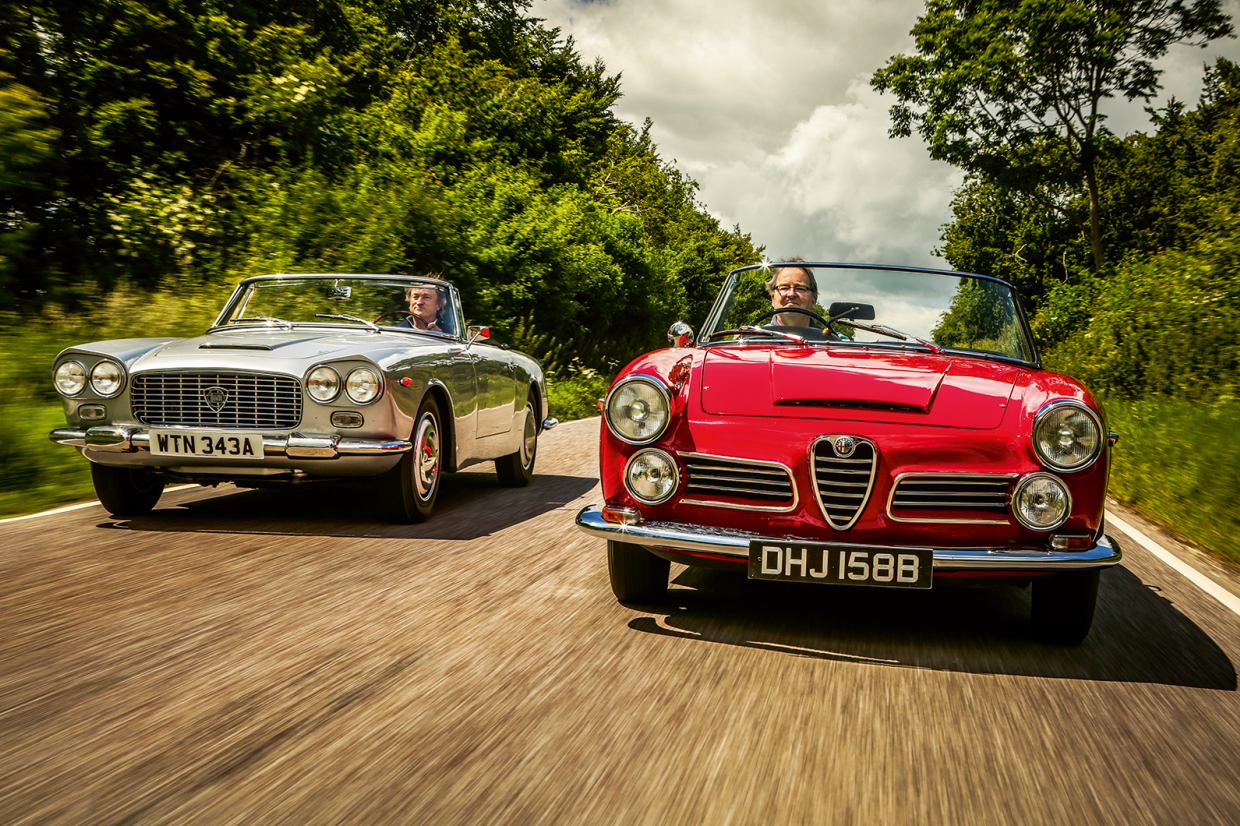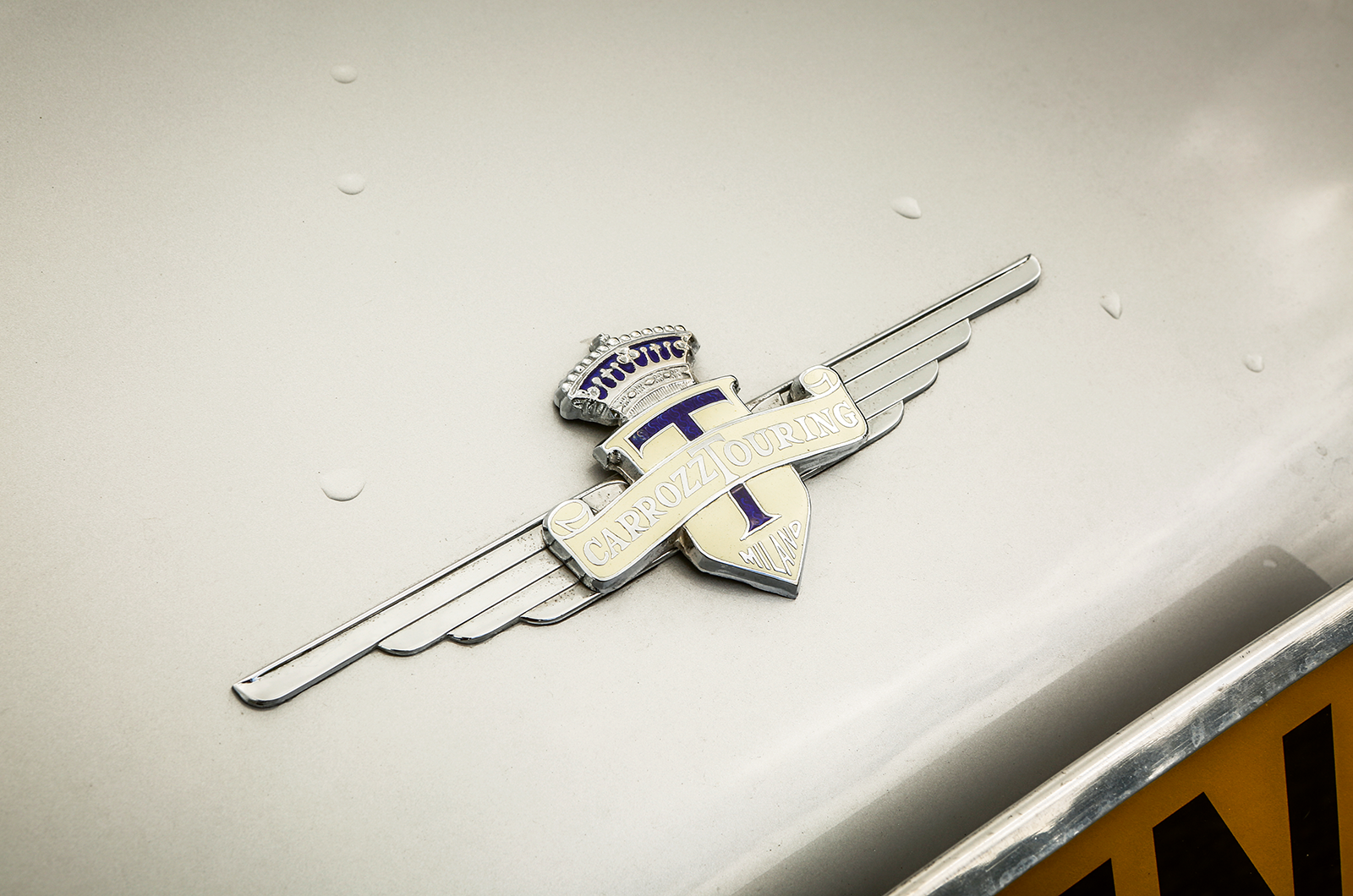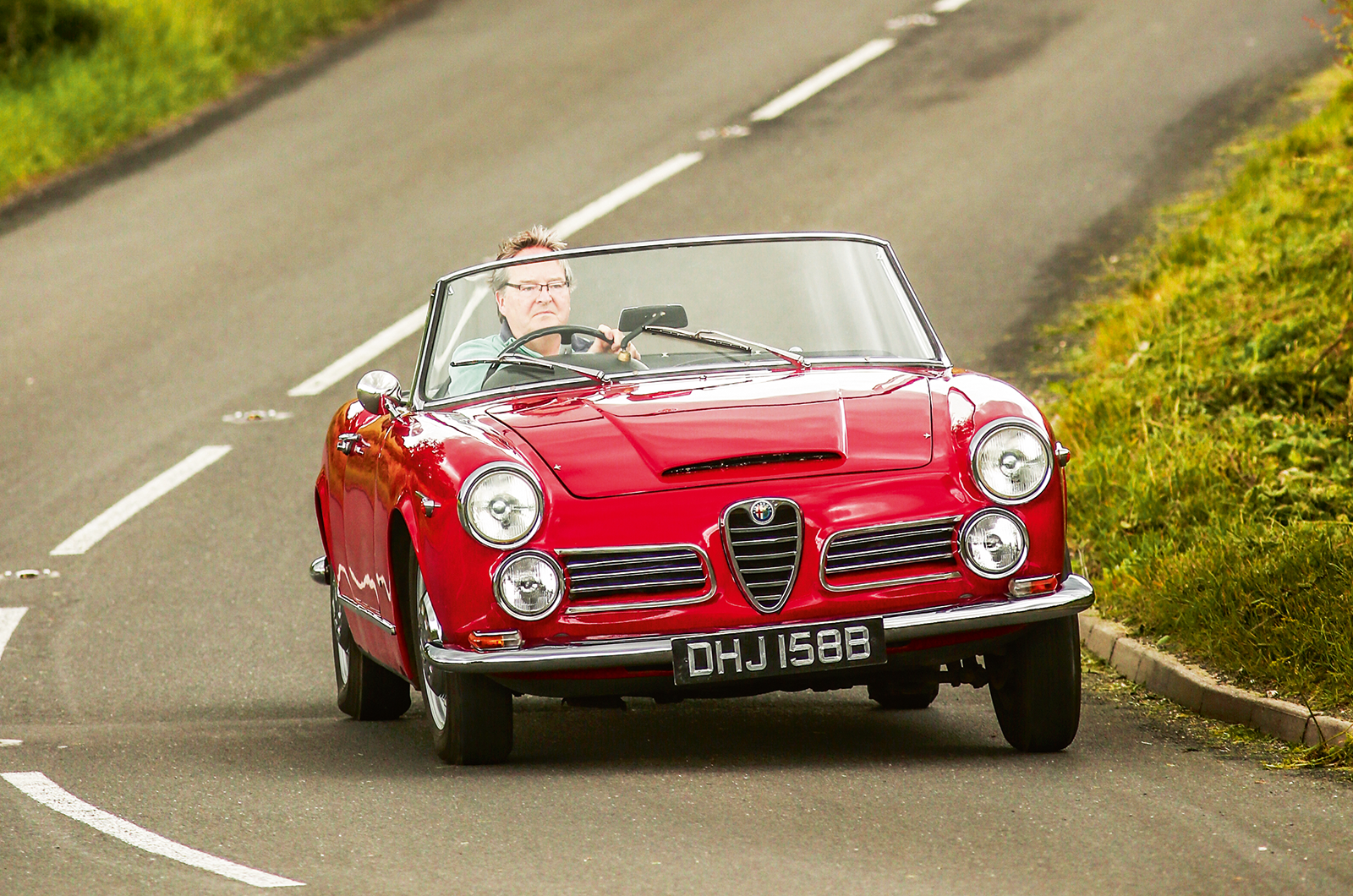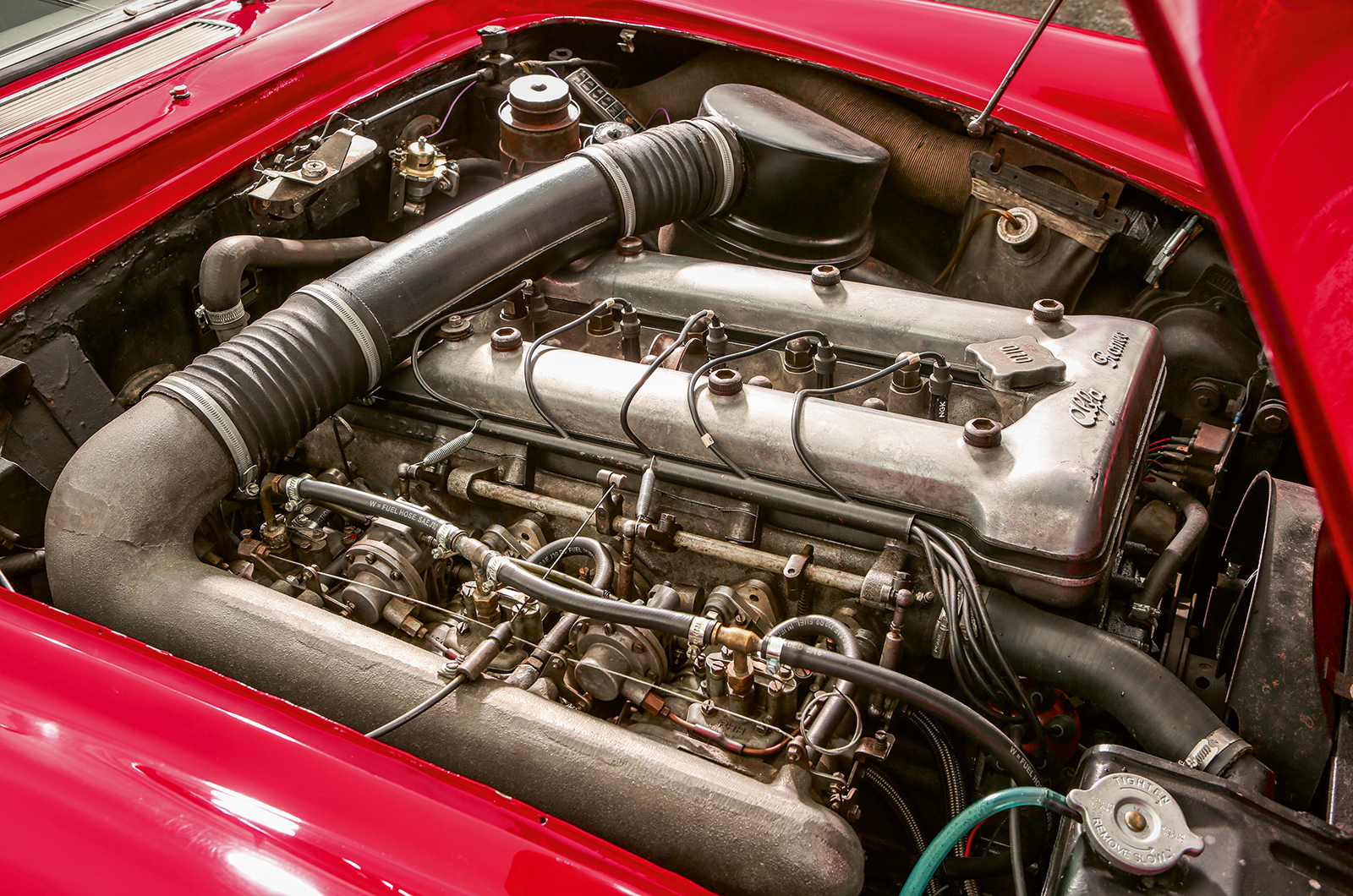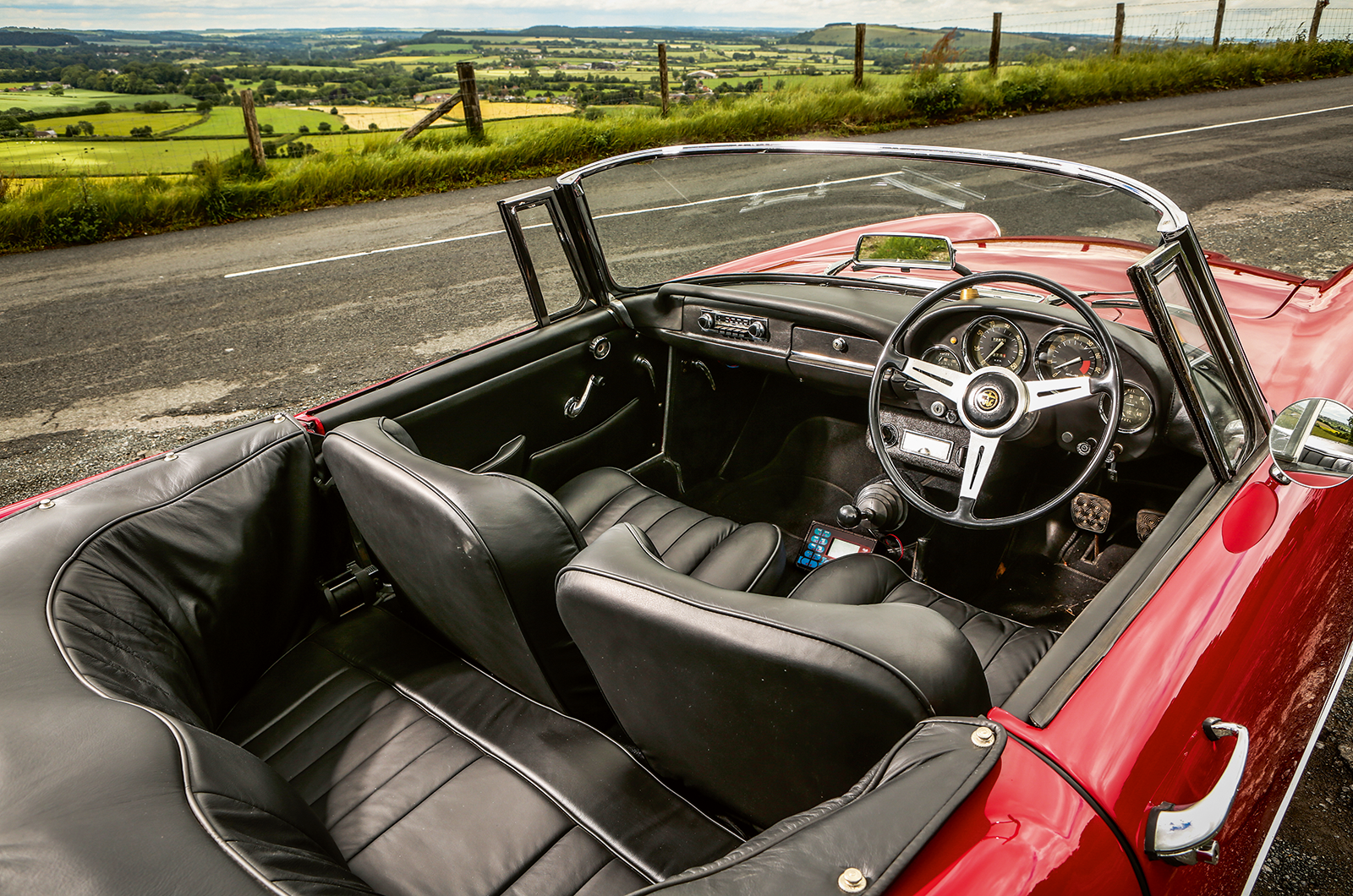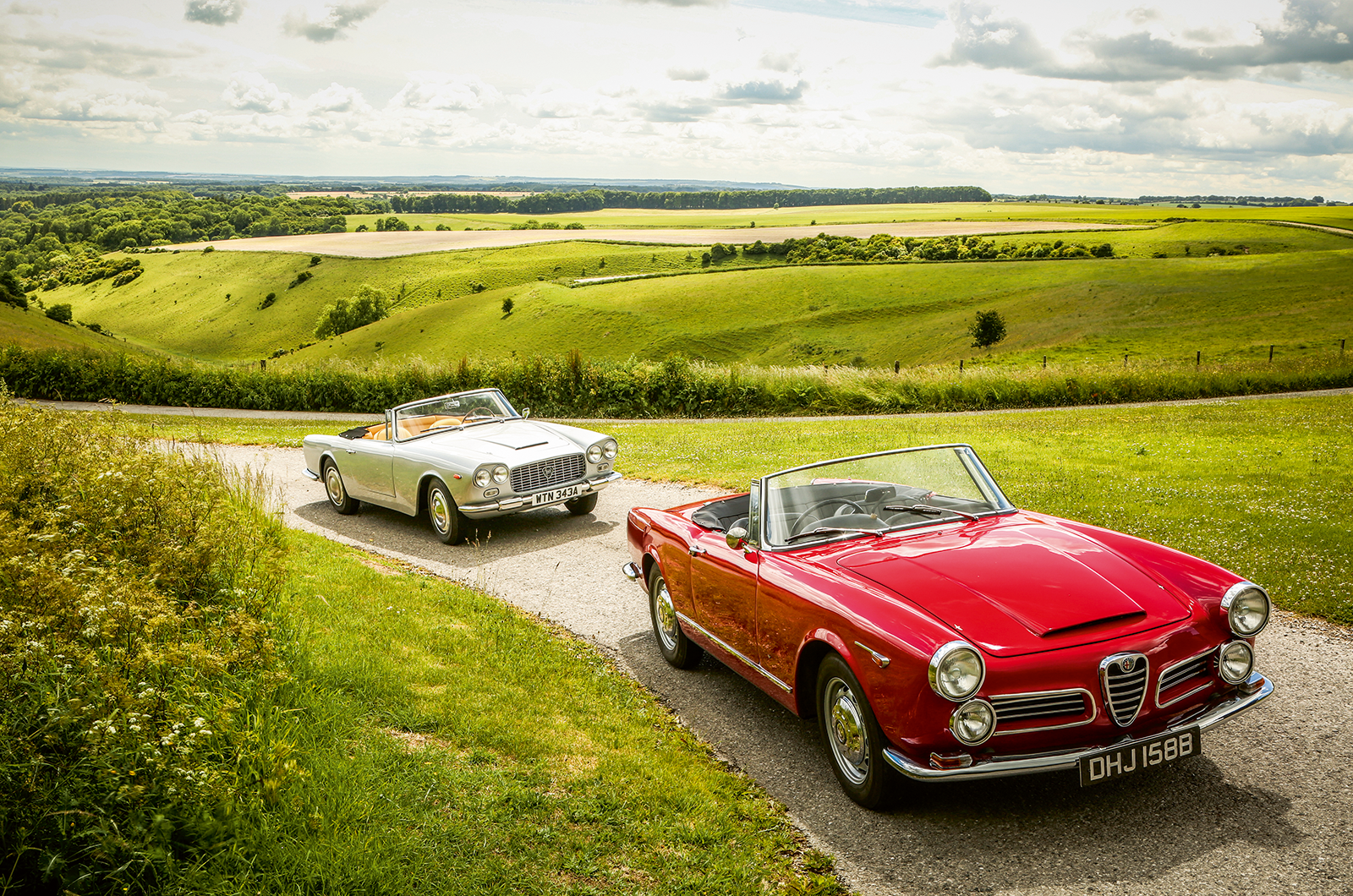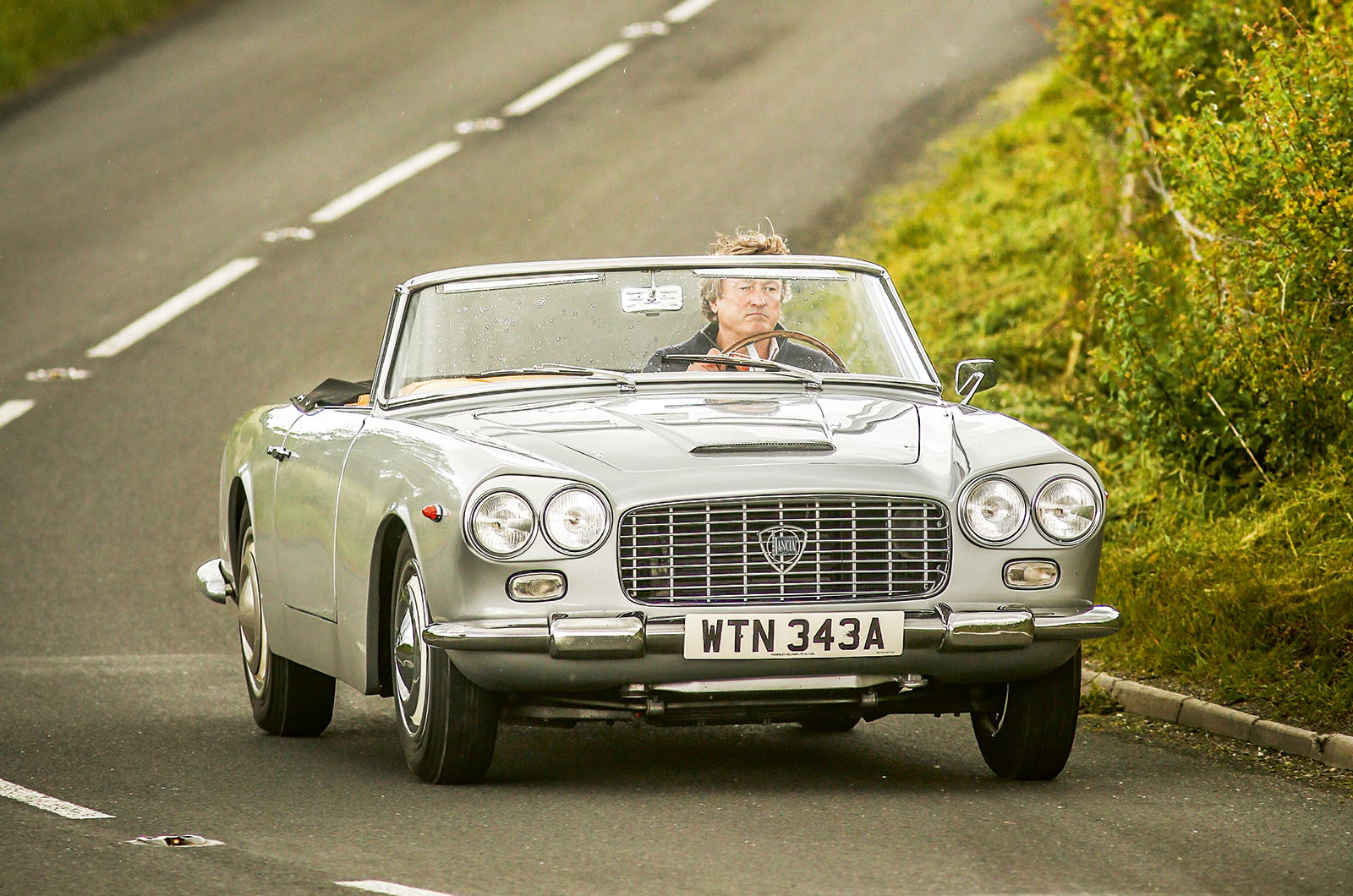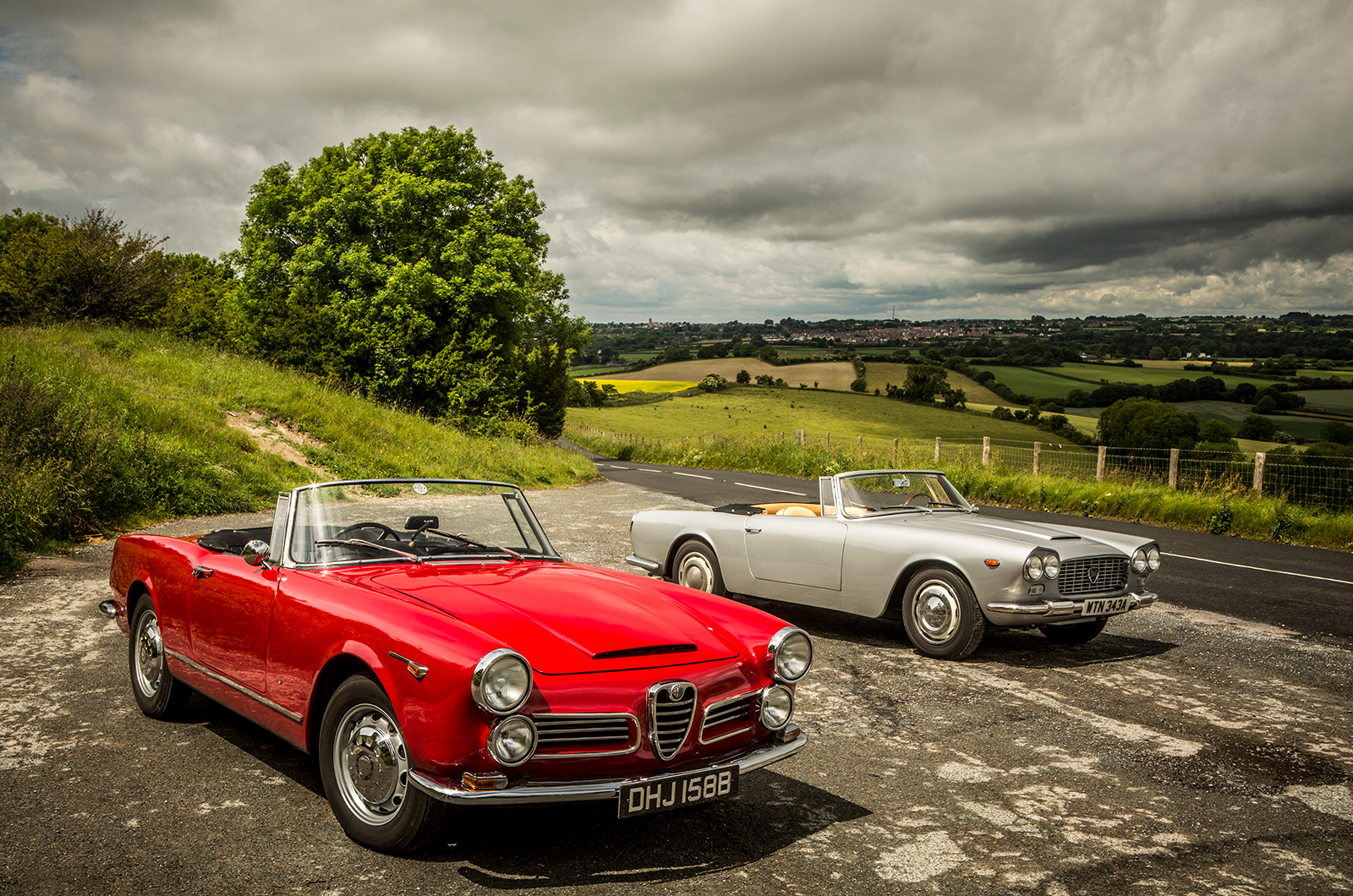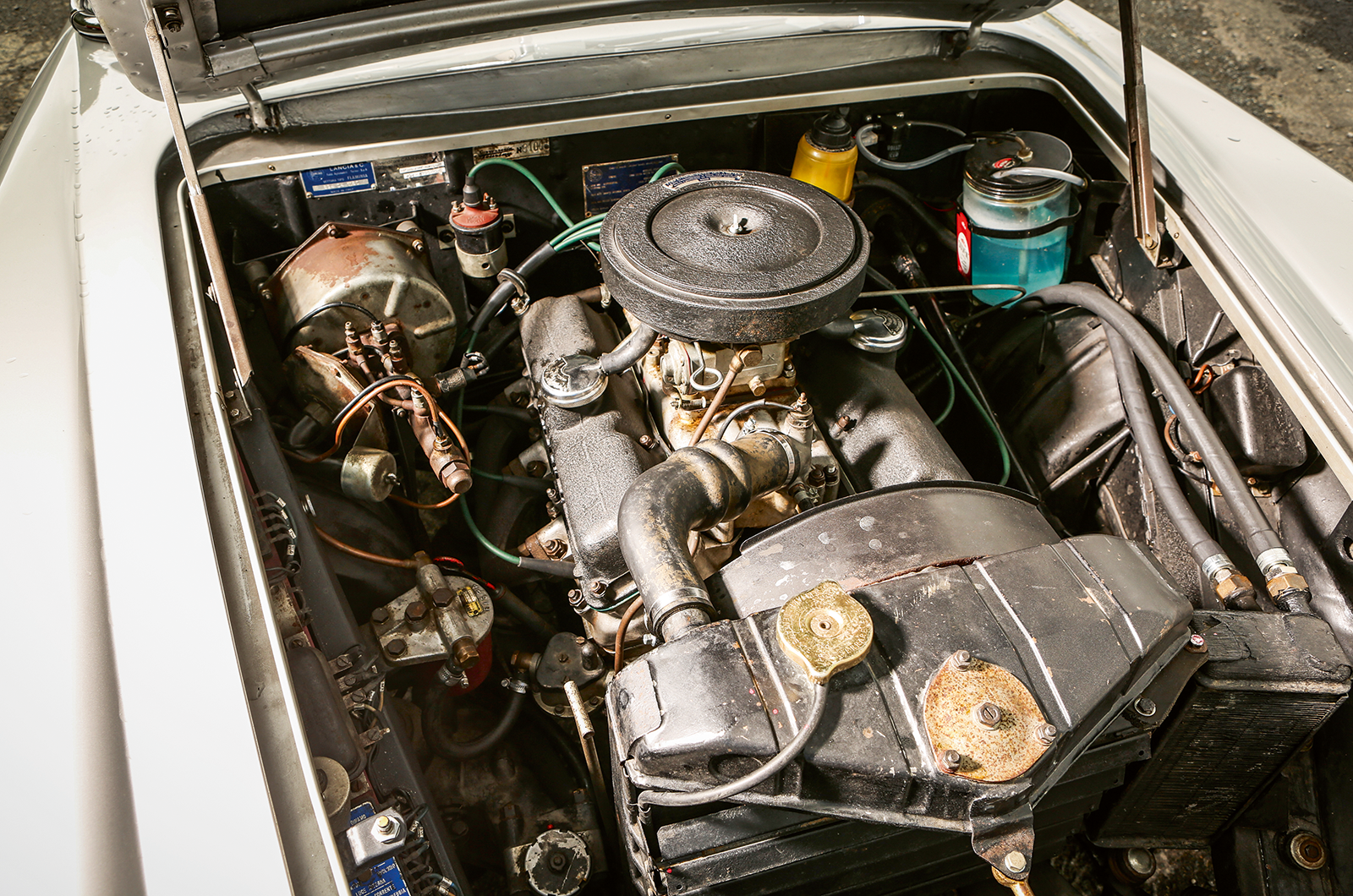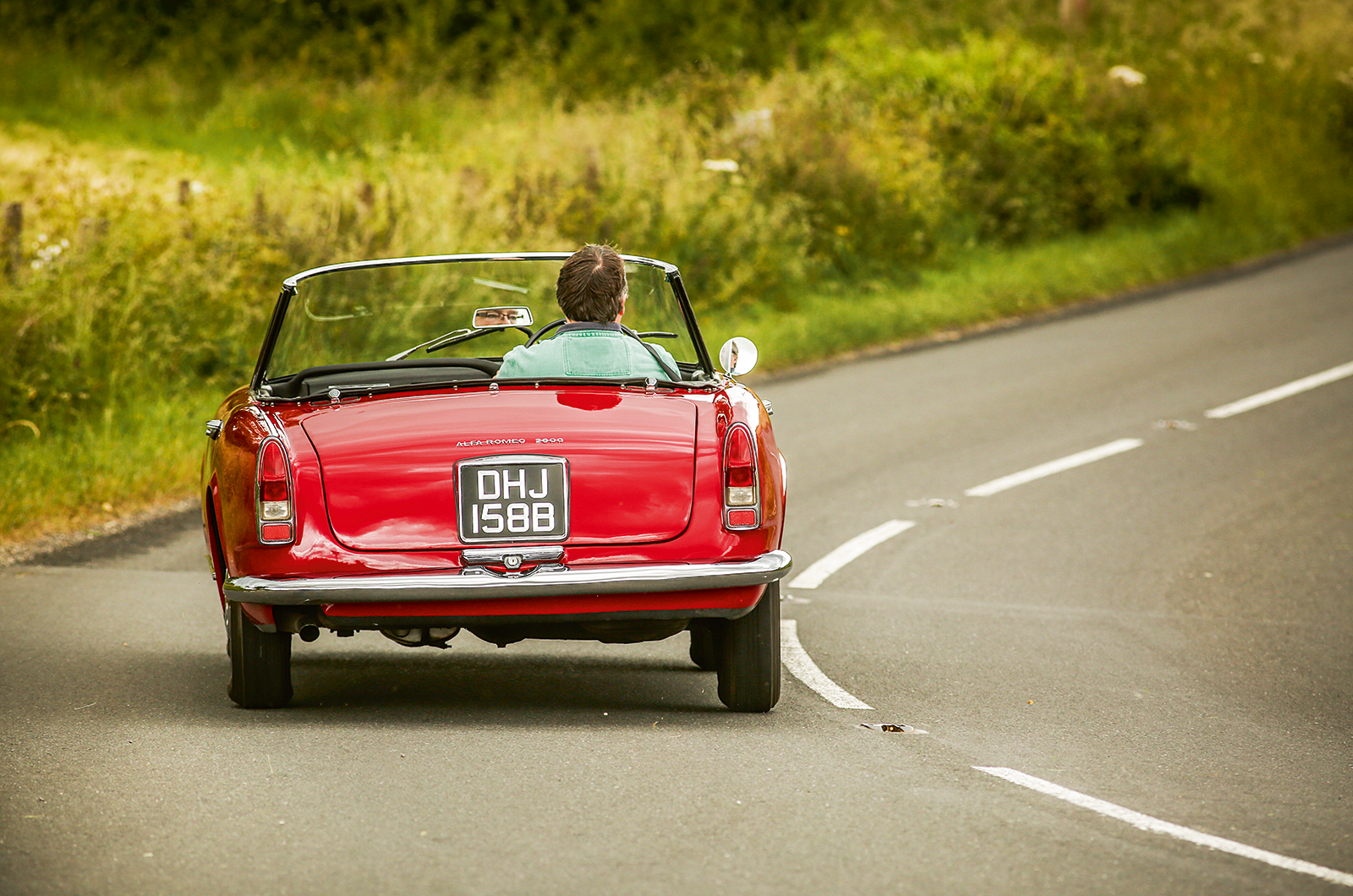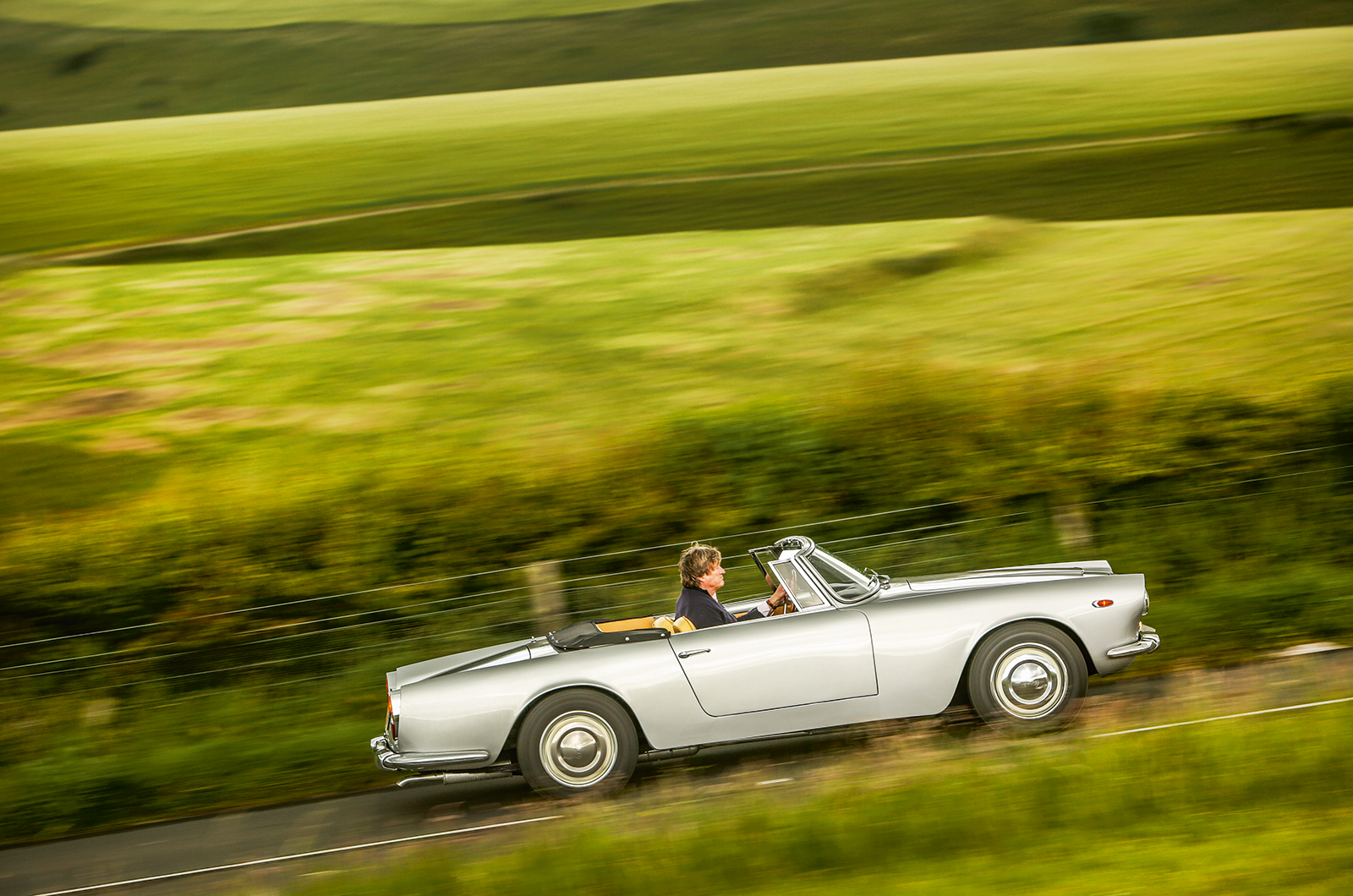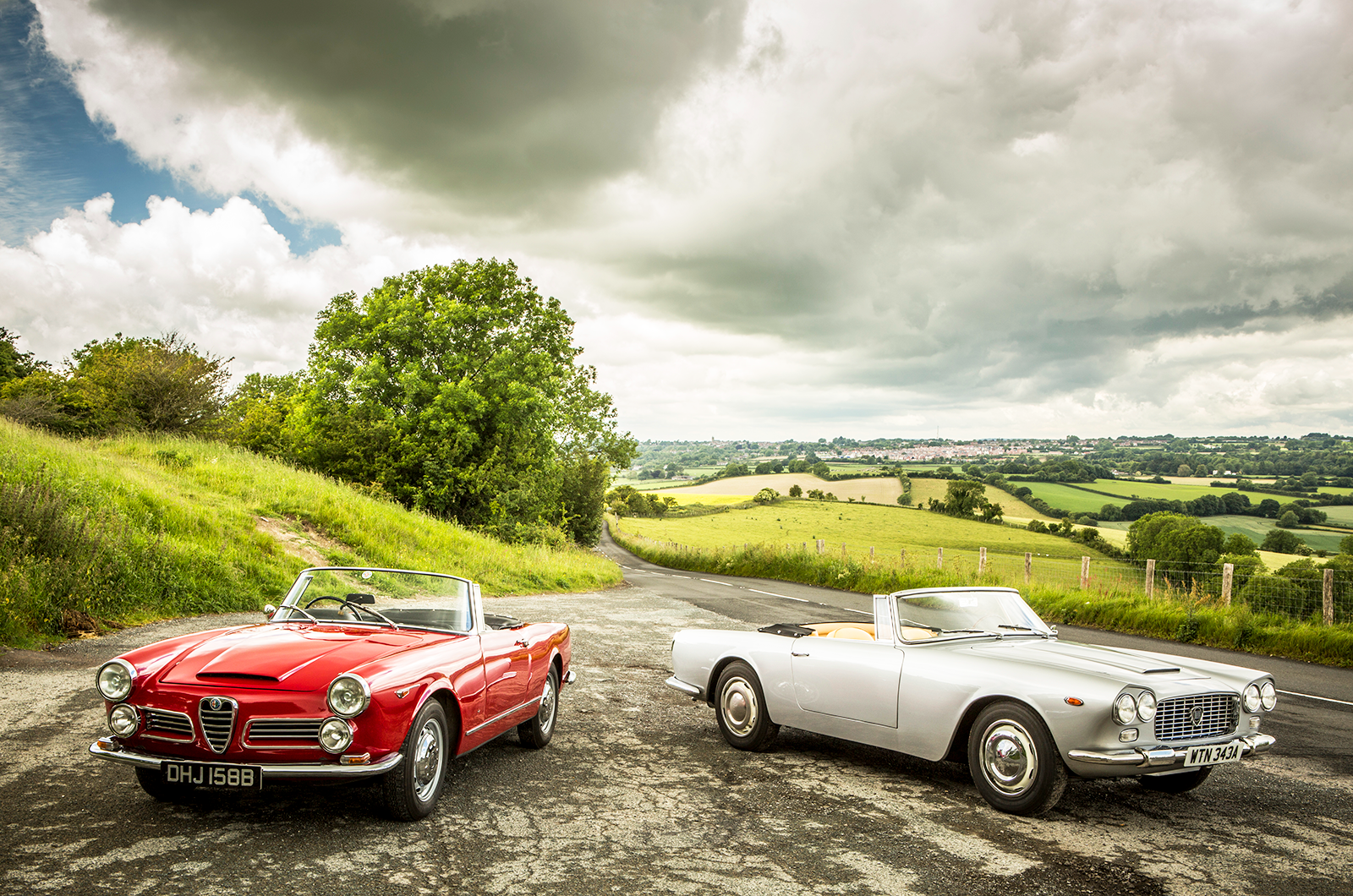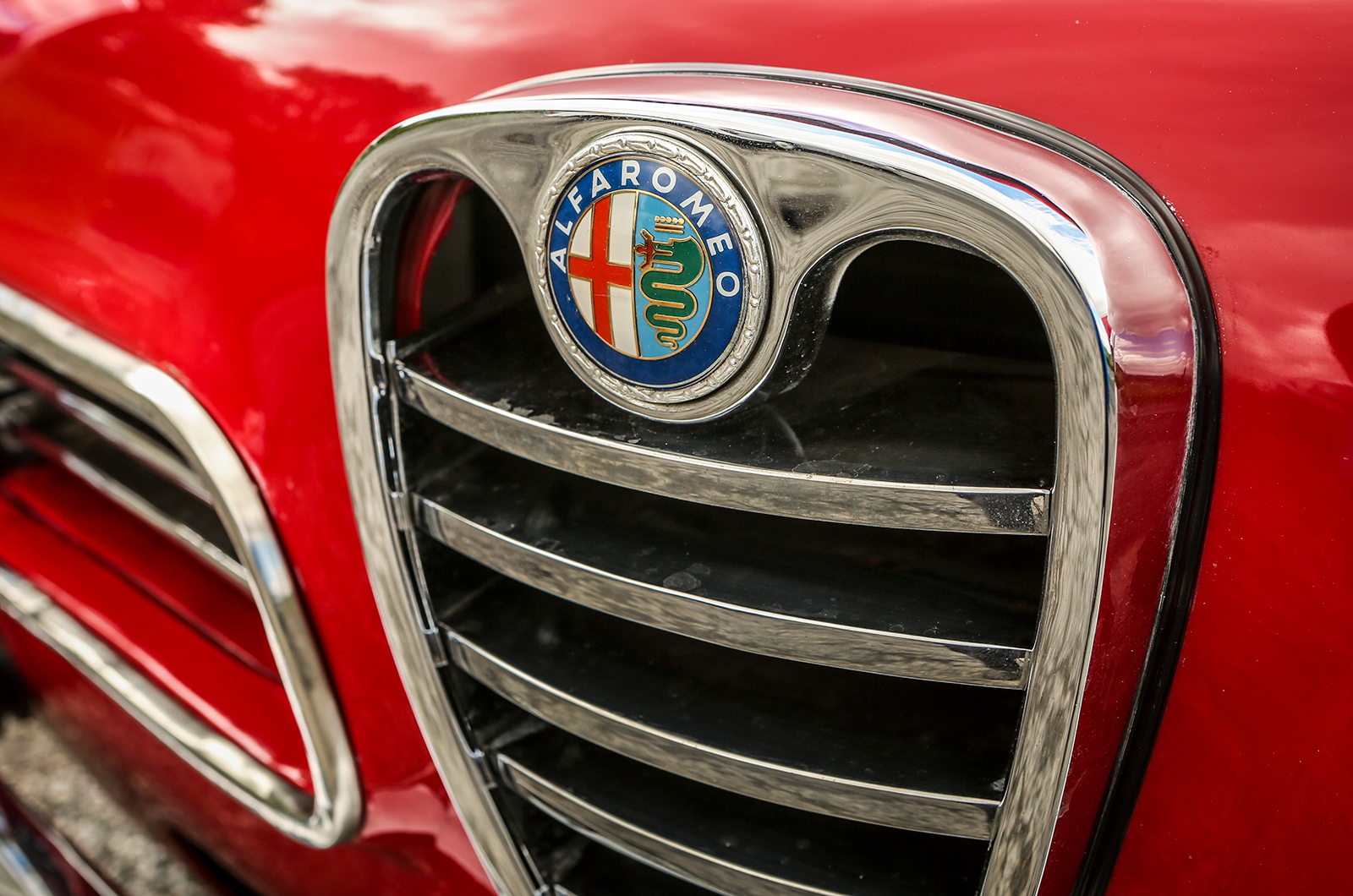On roads such as these, it’s an honourable stalemate in terms of seat-of-the-pants performance assessment, body rigidity and cosseting ride – even when you consider the different methods of construction and that the Lancia, in a rare bout of rear suspension regression, sits on cart springs.
Regardless of the stats, both feel evenly matched and enjoyably quick, without triggering worries about little men in vans and speed-awareness re-education.
The 2600 is gorgeous in profile
Yet in terms of steering feel and front-end response, the Flaminia easily pulls ahead.
Despite being of a similar design and hailing from the same company as that used in the Spider, the Lancia’s Gemmer worm and sector is as delicate and tactile as the wood-rimmed wheel that commands it.
Forget slop and straight-ahead numbness, this steering is so responsive, light and consistent from lock to lock that it proves to be an education.
Allied to better weight distribution and a higher polar moment of inertia, the Lancia’s eager reactions, crisp turn-in and predictability are a delight.
It certainly loses ground to the Alfa under braking, however. An officious servo hampers easy modulation and there is less overall stopping power, but through tight or flowing corners its better balance conspires to make it feel lighter than the Spider – even though the contrary is true.
Indeed, such is the experience that it stuns the inner Alfisti to silence, leaving behind bewilderment, shock and long minutes of numbness.
Pretty details abound on both these classic drop-tops
I still prefer the Spider’s lines, but I am the first to admit that a design garnished with awkwardness can – with greater familiarity – blossom, be viewed anew and appreciated.
Dynamically, no such excuses need to be made for the Lancia – a gran turismo that goes beyond its job title and gets uncomfortably close to some audacious machines that dare label themselves ‘sports cars’.
Relaxed enjoyment of the ‘sun in your face, wind in your hair’ variety recedes as confidence in the Flaminia’s ability flourishes, allowing a greater indulgence of that gearchange and the precocious musicality of that sonorous V6.
Both cars have plenty of charm
The 2600 Spider would doubtless be a wonderfully unfussed and enjoyable way to cruise down to the Amalfi Coast; the Lancia would probably take longer, its driver having surrendered to the temptation to take the long, wriggly way around.
It is an inescapable truth that, from the driver’s seat, the Flaminia looks, feels and sounds more special than the Alfa.
Such is its cache of talents and delicate feedback that it is eligible for membership of an exclusive club that includes the Lotus Elan, AC Ace, Porsche 356 and, yes, a fair few flavours of four-cylinder Alfa.
Fellow Alfa fans, mi dispiace.
Images Tony Baker
Thanks to Hugh Williams; Justin Fish; Colin Marr; Tim Heath at the Lancia Motor Club; Ian Packer at the Alfa Romeo Owners’ Club
Feature originally published in the September 2015 issue of Classic & Sports Car
Factfiles
Lancia Flaminia 2.5
- Sold/no built 1960-’61/421 (convertible)
- Construction steel chassis, Superleggera alloy bodywork
- Engine all-alloy, sohc-per-bank 2458cc V6, single Solex 40 PAAI carburettor
- Max power 117bhp @ 5100rpm
- Max torque 137lb ft @ 3500rpm
- Transmission four-speed all-synchromesh manual transaxle, driving rear wheels
- Suspension: front independent by double wishbones, coil springs, anti-roll bar rear de Dion axle, semi-elliptic leaf springs, Panhard rod; telescopic dampers f/r
- Steering worm and sector
- Brakes discs with servo
- Length 14ft 9¼in (4500mm)
- Width 5ft 5¼in (1660mm)
- Height 4ft 3¼in (1300mm)
- Wheelbase 8ft 3¼in (2520mm)
- Weight 3086lb (1400kg)
- 0-60mph 13.6 secs
- Top speed 106mph
- Mpg 18-25
- Price new £3775 (1962 3C 2.5)
Alfa Romeo 2600 Spider
- Sold/number built 1962-’65/2257
- Construction steel monocoque
- Engine all-alloy, dohc 2584cc ‘six’, triple Solex 44 PHH carburettors
- Max power 145bhp @ 5900rpm
- Max torque 156lb ft @ 4000rpm
- Transmission five-speed all-synchromesh manual, driving rear wheels
- Suspension: front independent by double wishbones, anti-roll bar rear live axle, lower radius arms, triangular axle locator; coil springs, telescopic dampers f/r
- Steering worm and sector
- Brakes discs, with servo
- Length 14ft 4in (4369mm)
- Width 5ft 5in (1651mm)
- Height 4ft 6in (1380mm)
- Wheelbase 8ft 2in (2489mm)
- Weight 2530lb (1147kg)
- 0-60mph 9.2 secs
- Top speed 124mph
- Mpg 18-26
- Price new £2806 (1962)
READ MORE
Troubled succession: Lancia Aurelia and Lancia Flaminia
Driving Jochen Rindt’s Alfa Romeo GTA
Dream drive: Alfa Romeo Duetto 1600
Simon Charlesworth
Simon Charlesworth is a contributor to Classic & Sports Car
